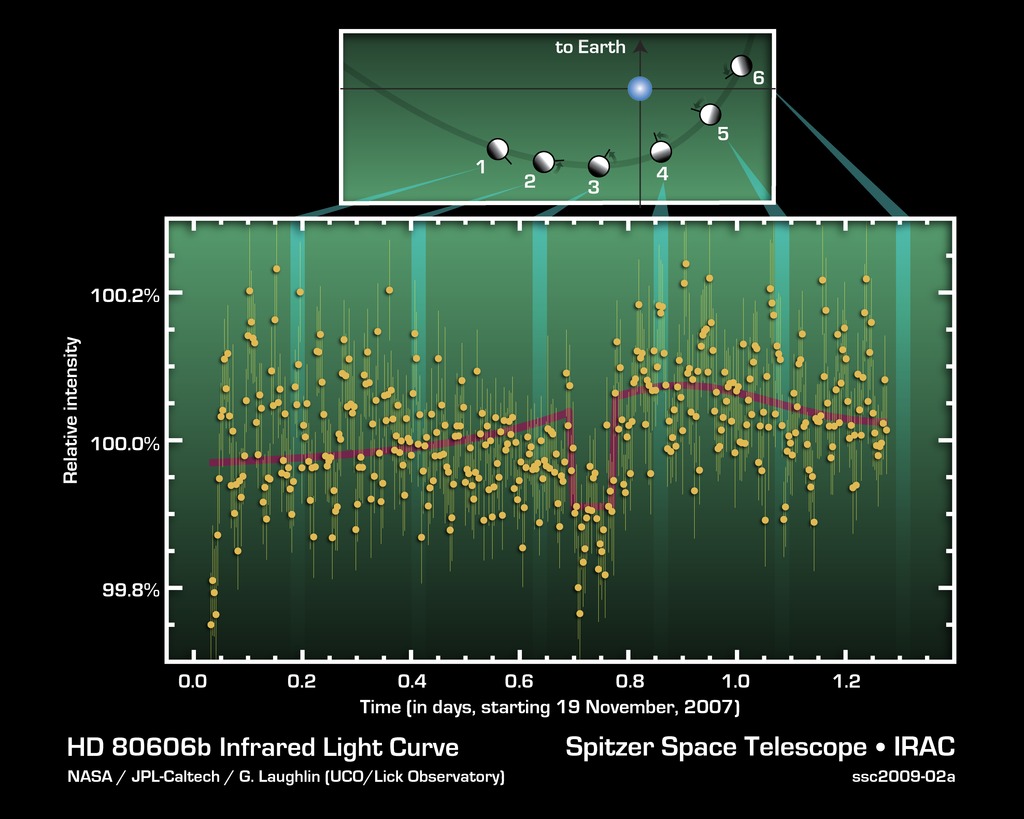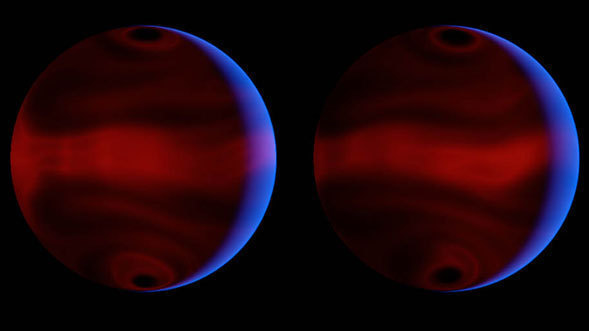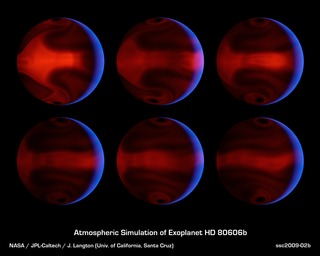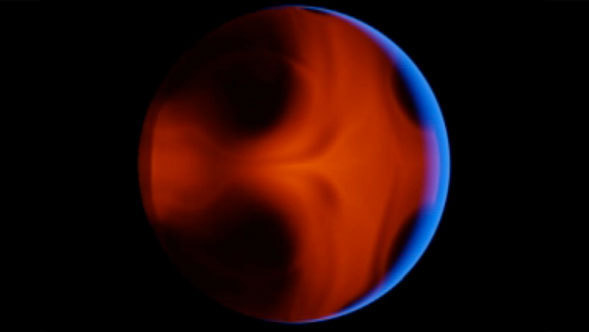
Credit: NASA/JPL-Caltech/G. Laughlin (UCD/Lick Observatory)
Chart • January 28th, 2009 • ssc2009-02a
ssc2009-02a
This figure charts 30 hours of observations taken by NASA's Spitzer Space Telescope of a strongly irradiated exoplanet (an planet orbiting a star beyond our own). Spitzer measured changes in the planet's heat, or infrared light.
The lower graph shows precise measurements of infrared light with a wavelength of 8 microns coming from the HD 80606 stellar system. The system consists of a sun-like star and a planetary companion on an extremely eccentric, comet-like orbit. The geometry of the planet-star encounter is shown in the upper part of the figure.
As the planet swung through its closest approach to the star, the Spitzer observations indicated that it experienced very rapid heating (as shown by the red curve). Just before close approach, the planet was eclipsed by the star as seen from Earth, allowing astronomers to determine the amount of energy coming from the planet in comparison to the amount coming from the star.
The observations were made in Nov. of 2007, using Spitzer's infrared array camera. They represent a significant first for astronomers, opening the door to studying changes in atmospheric conditions of planets far beyond our own solar system.
About the Object
- Name
- HD 80606b
- Type
- Planet > Type > Gas Giant
- Planet > Special Cases > Transiting
- Planet > Special Cases > Hot Jupiter
- Distance
- 58 Light Years
Color Mapping
| Band | Wavelength | Telescope |
| Infrared | 8.0 µm | Spitzer IRAC |







